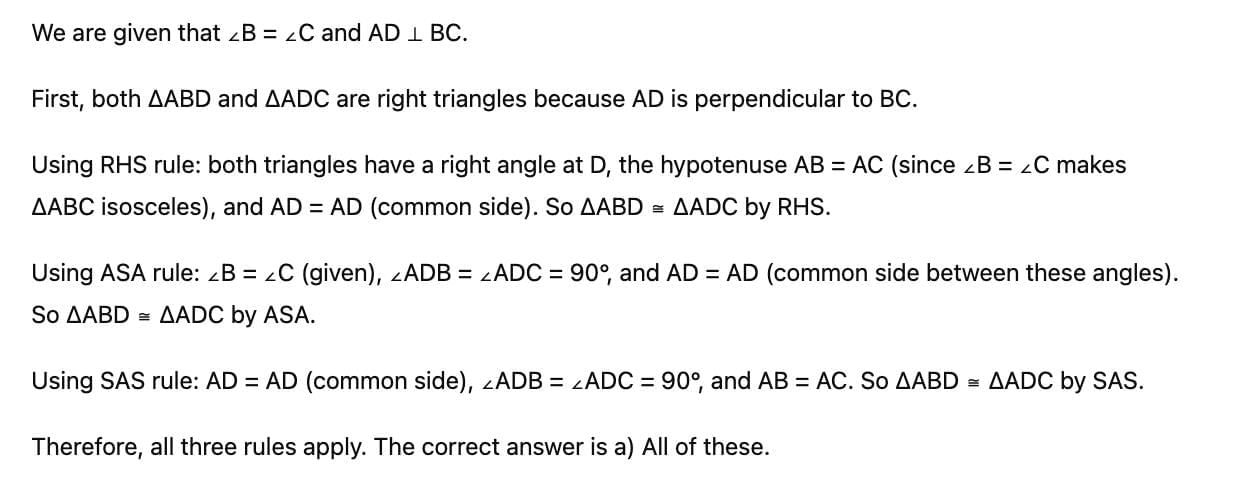Test:Triangles- 1 - Grade 9 MCQ
25 Questions MCQ Test - Test:Triangles- 1
If AB = QR, BC=RP and CA = QP, then which of the following holds?


△PQR, ∠P = 60∘, ∠Q = 50∘ and Which side of the triangle is the longest?
If the bisector of the angle A of a △ABC is perpendicular to the base BC of the triangle then the triangle ABC is :
In the adjoining figure, BC = AD, CA⊥AB and BD⊥AB. The rule by which △ABC ≅ △BAD is
In the given figure, ABC is an equilateral triangle. The value of x+y is
In quadrilateral ABCD, BM and DN are drawn perpendiculars to AC such that BM = DN. If BR = 8 cm. then BD is
If the altitudes from two vertices of a triangle to the opposite sides are equal, then the triangles is
In △AOC and △XYZ, if ∠A = ∠X, AO = XZ, and AC = XY, then by which congruence rule △AOC ≅ △XZY?
In the adjoining figure, AB = AC and AD⊥BC. The rule by which △ABD ≅ △ACD is
In the adjoining Figure, AB = AC and BD = CD. The ratio ∠ABD : ∠ACD is
In △ABC and △PQR, three equality relations between corresponding parts are as follows: AB = QP, ∠B = ∠P BC = PR. State which of the congruence criterion applies in this case:
O is any point in the interior of △ABC.Then which of the following is true?
In the adjoining figure, AB = AC and AD is bisector of ∠A. The rule by which △ABD ≅ △ACD
In the adjoining figure, AB⊥BE and FE⊥BE. If AB = FE and BC = DE ,then
D,E and f are the mid-points of the sides BC, CA and AB res. Of △ABC. Then △DEF is congruent to triangle:
Which of the following is not a criterion for congruence of triangles?
In the adjoining figure, ∠B = ∠C and AD⊥BC. The rule by which △ABD ≅ △ADC
In the adjoining figure, ABCD is a quadrilateral in which BN and DM are drawn perpendiculars to AC such that BN = DM. If OB = 4 cm. then BD is
In triangle PQR length of the side QR is less than twice the length of the side PQ by 2 cm. Length of the side PR exceeds the length of the side PQ by 10 cm. The perimeter is 40 cm. The length of the smallest side of the triangle PQR is :
In triangle ABC and triangle DEF, if AB/DE = AC/DF = BC/EF, then the triangles are:






















